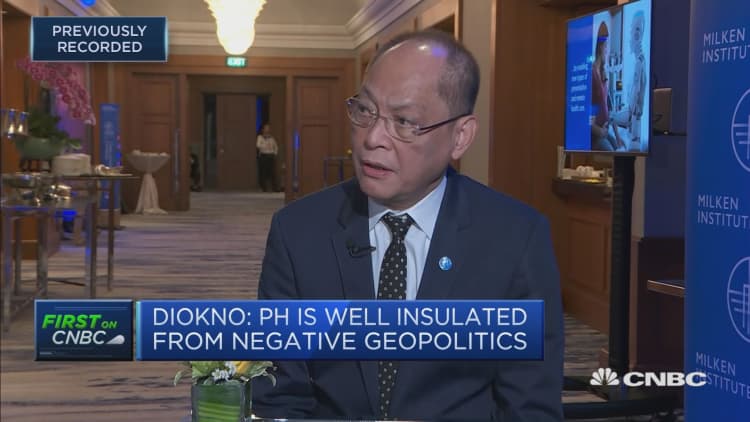The Philippine economy grew faster than expected in the third quarter fueled by stronger government spending, making it all but certain there won't be a need for more policy easing this year.
Gross domestic product in the July-September quarter grew 6.2% from a year earlier, the statistics agency said on Thursday, exceeding the 6.0% median forecast in a Reuters poll. That compared with 5.5% growth in the prior quarter.
On a seasonally-adjusted basis, the economy grew 1.6% in the third quarter.
An expected pick-up in government spending, slowing inflation, a rebound in farm output combined to lift third quarter growth.
The Philippines remains one of the fastest-growing economies in Asia, but rising uncertainties, including ongoing U.S.-Sino trade tensions, had put this year's 6-7% growth target at risk.
Economic Planning Secretary Ernesto Pernia said the economy would need to expand by at least 6.7% in the final quarter to meet at least the bottom end of the growth goal.
The growth rebound, however, may not be sustained.
"We don't think Q3's strong figures mark the start of a sustained rebound. On the plus side, consumption should continue to grow at a decent rate, helped in part by a sharp slowdown in inflation, which will have boosted consumers' purchasing power," said Alex Holmes, Asia economist at Capital Economics, said in a research note.

Exports contracted for the first time in six months in September, hit by a decline in demand from some of its top trading partners, while imports shrank for a sixth month in a row in September despite an increase in infrastructure spending.
Expenditures were up 39% in September from last year, but more needs to be done as spending in the nine months ended September fell 2.1% short of the government's program.
Slowing inflation, which has allowed the central bank to reverse some of last year's policy tightening, should bode well for domestic demand and help drive growth in the second half of the year, Pernia told a media briefing.
The central bank slashed its benchmark interest rate thrice this year by a total of 75 basis points to 4.0% and reduced the reserve requirement ratio (RRR) by 400 basis points to 14%.
Central bank Governor Benjamin Diokno has said there will be no more monetary policy and RRR cuts for the year, and that the central bank will review economic conditions next year.
Capital Economics expects another 50 basis points of rate cuts for next year.
The central bank has two more policy meetings this year, one on Nov. 14 and the next on Dec. 12.

